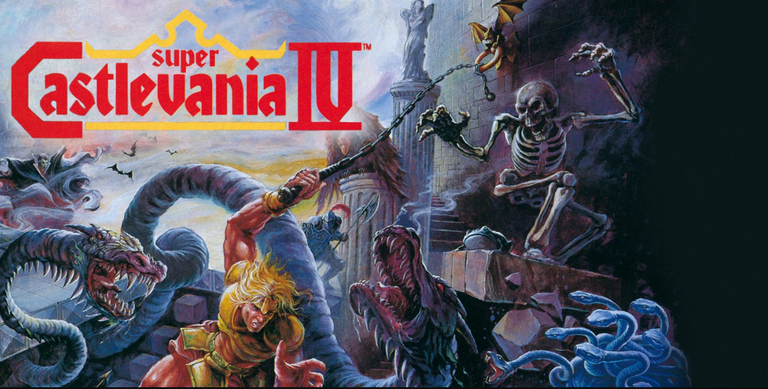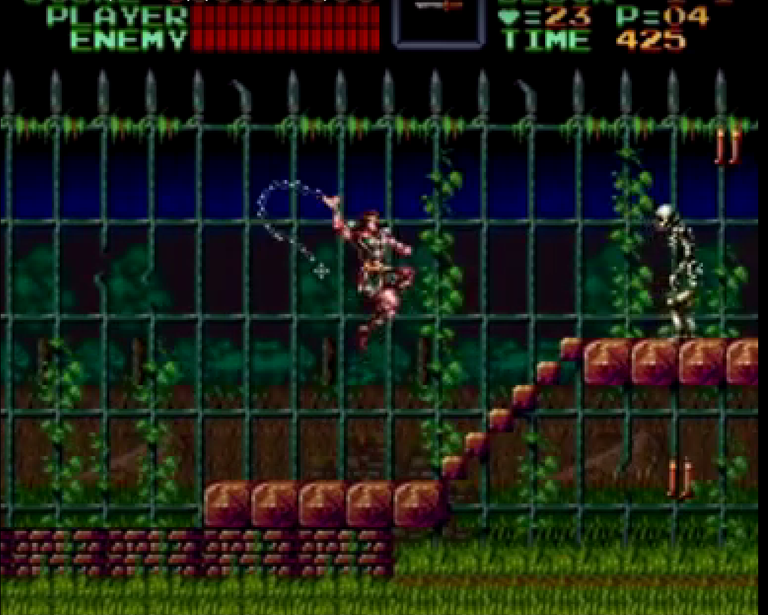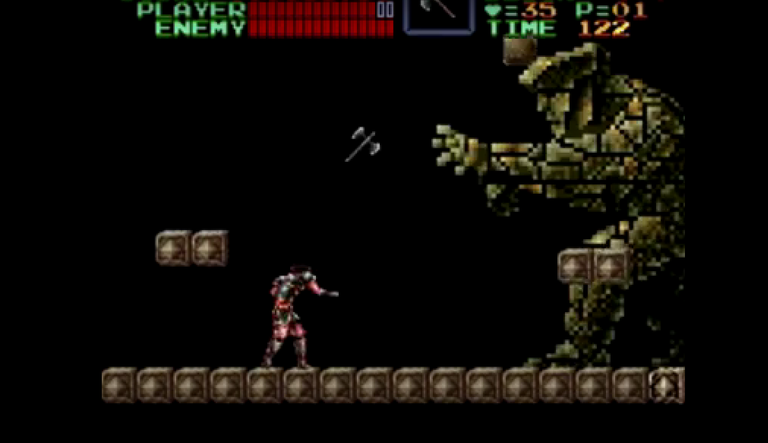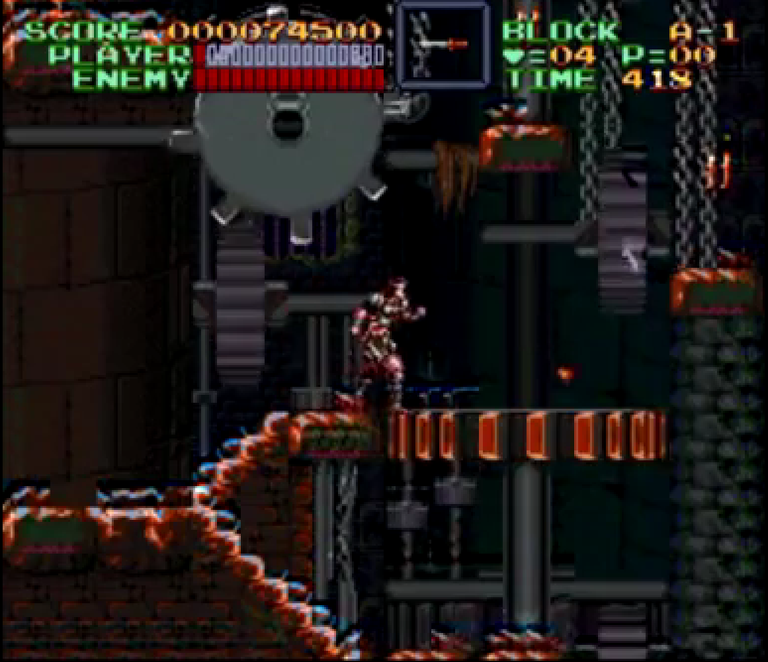My reunion with Super Castlevania IV

Good evening, a few weeks ago I had the opportunity to play Castlevania IV again and I would like to tell you about my memories and how I am reunited with the game, so I begin.
The Game
Castlevania IV is a classic among the classics of Super Nintendo, a monster of action and platforms, a game so stupid that when Nintendo Spain released its VHS presentation of the console, it said that it had won an award for the best adventure "and I always wondered who has given an award to a game that has not been released?" Well, I had not done it here in Spain, but damn I was 14 years old and I was an idiot hehehehehe

although and this is the funniest thing about all Castlevania IV, it is actually a remake of the first Castlevania it is within the chronology of the saga the adventure of Simon Belmore in 1691 in his goal to finish off Dracula up to 5 games tell this story but it is precisely the simplest and easiest of all the Nintendo 8-bit one that inspires this Castlevania four a game directed by Masahiro Bueno in a difficult development for a key aspect. It is one of the first titles of the company, the third concrete for the brain of the beast and unlike what happens with the Game Boy edition catalog full of small graphics and simple mechanics closer to a game and whats than a portable
This game spectacularly boosts the graphics chip of a console that is only a year old where other games move their funds. This game moves the entire stage, giving it a life never before seen on a platform. When other titles have monsters that occupy a small part of the screen, there we have a boss that can occupy the entire screen. When the game does not rotate a gear on which we have to walk, it defeats the entire screen to open new paths. It pivots chandeliers at great heights where we have to make our way or makes us rotate ourselves to save great abysses hanging from our whip. The detail applies only to the technical part with the famous mode 7.

It also takes the trouble to give continuity to its phases, making you see where you enter, where it lets you fall, where we advance in an orderly manner. If we are in the treasure room, the game will give you more money than any other part of the game. And the skeletons are golden. If we hit a semi-transparent skull, its damage will burn, seeming like every enemy is thematic and circus-written. To a specific area of the game, we go through a series of well thought-out elements placed and related to each other so that Dracula's castle is not a simple union and relevant of scenes, but a place with a minimum sense.
For once, and this is perhaps the most important novelty and one that we would hardly see again later, we have complete freedom of movement with the whip that provides an extra point of defense that allows us to protect ourselves from certain weak attacks and eliminate enemies in different ways or in more spectacular ways. In addition, we can crawl and correct our jump. All these brilliant mechanics were created by Michuli Yaida 1, who would later found the legendary Tresser company.
Graphic section
The game seems short by today's standards, but at the time it was impressively long and above all extremely varied. Its scenario is detailed down to the last pixel of the screen with all kinds of visual aspects that exemplify the cadet of the Castle and its inhabitants. The difficulty is not especially high, but it goes up progressively thanks to its password system. We can comment on the game endlessly, since we enter a loop after defeating it and you can play it until you get bored. In its day I gave it like 6 or 7 turns, I don't remember exactly how many, but I do remember that the first skeletons, those that are so weak, could easily withstand 4 or 5 lashes back then.
I have already talked a lot about the graphics, but not about its sound. The soundtrack is very extensive, but above all spectacular. Its quality and rhythm are impressive and very atmospheric, and the sound effects are up to par.
the worst
I hate it when games drag on with a succession of bosses before facing Dracula, that's what we do with 3 fights before the end, it's like they didn't have time to finish their phases, but they had to put them in anyway, anyway, they're not bad fights at all, but what I like least about this title
The highlights
That one of the first games for this system is something that the machine played so much and I do it becoming one of the titles of the saga that we appreciate the most and with great merit.

The best
The best thing is undoubtedly its control and variety of movements, an example to follow for the creators of platform and action games. At the playable level, it is impeccable and allowed us to perform a series of actions rarely seen in other adventures.
My opinion
Super Castlevania 4 is a timeless classic, an example of great level design, an impeccable control system and a sickly graphic detail. Unfortunately, the title sold half a million copies worldwide, so future titles would make notable visual changes and change some gameplay elements that Hay and his team created, who were still new to this video game saga. It is a title that you should not miss and that still has almost the same charm today as it had on October 31, 1991 when it was released to the Japanese market 33 years ago.

All images shown in this post have been taken and created by me

Oh por dios no sabía que Simón belmore era el papá de trevor 😱 espero no recordar mal pero (es el protagonista de la serie en Netflix)
enserio??
I was a big fan of Castlevania II myself. I sucked at the original and when I heard this was basically a remake of that game, I went ahead and skipped it, figuring the headaches I experienced in the NES original would still be here on the Super NES.
Well, if I tell you that I still have the Nintendo console in my closet in its box, the pity is that there was a flood in my house and I lost all the games and I didn't lose the console because I had it on the top.
I know how that feels, losting things to situations out of your control. It sucks.
The only Castelvania I remember was the one on Nintendo 64 and I didn't play it much because I didn't know what to do. As for what you said about the Boss, you reminded me a lot of the witch from Banjo-Kazooie, that ending was really long for me lol.
Thanks for sharing your experience, I enjoyed reading you! 💕
I also enjoyed it a lot, the truth is that I found it a little difficult but I finished it hehehehe
Thank you for your witness vote!
Have a !BEER on me!
To Opt-Out of my witness beer program just comment STOP below
View or trade
BEER.Hey @superr, here is a little bit of
BEERfrom @isnochys for you. Enjoy it!Learn how to earn FREE BEER each day by staking your
BEER.